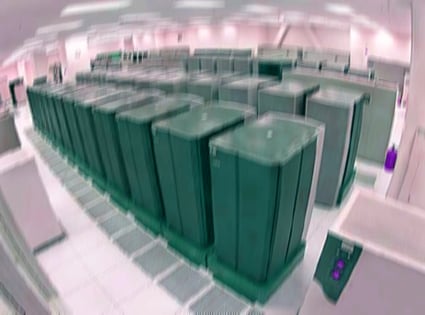This article is more than 1 year old
Data centre fuzzification: Clear thinkers needed
How Cisco is trashing the server-storage-switch boundaries
Comment: Traditional and clear-cut boundaries between servers, network switches and storage gear are breaking down - and skirmishes, in this uncertain new era of fuzzification, are bound to break out.
In the good old days - such as the decade up to 2007 - a clearly defined server talked by a network link to a switch which connected it to shared storage. This was a stable situation with distinct groups of suppliers providing the three pieces.
We had EMC, HDS, NetApp and OEM suppliers like Dot Hill, LSI and Xyratex, providing networked storage arrays. Then we had networking suppliers such as Cisco, Brocade, Juniper, Foundry and Extreme providing switches of various sorts with ancillary suppliers like Emulex and QLogic providing server adapter interfaces.

Data centre server, storage and switch edges are blurring.
Finally there were the server suppliers - Dell, HP, IBM and Sun for example - who were, unlike the previous two groups, not pure-play vendors, but multi-play ones providing a full system made of of server and storage components and networking gear although much networking gear and storage kit came to the buyer of the system from specific vendors.
This decade-long steadiness started breaking down as the commoditisation of server hardware and operating software made servers cheap and ubiquitous. After all, a networking switch has a processor, memory and operating software. It might be an ASIC running firmware, but basically it's an embedded server. Ditto for the storage controller.
We saw embedded servers creeping into storage network switches, blades in Directors that would run specific storage management tasks such as virtualisation and replication. With the rise of the virtual machines we began to see storage controller software and storage virtualisation software made available in virtual machine containers. I'm thinking of LeftHand Networks' Virtual Storage Appliance as an example of this.
We saw storage array controllers start being based on an X86/Linux or other Unix platform, think NetApp's FAS arrays, and they started doing very complicated server-like jobs such as virtualisation, careful placement of blocks (Compellent and Pillar), thin provisioning, replication, and snapshotting. Start-up Pivot3 even started offering server-less computing with its video surveillance storage products.
